Bødalsbreen is a glacier arm of Jostedalsbreen. It has the most beautiful moraine sequence in Norway.
Bødalsbreen is a glacier at the head of Bødalen. The quiet valley is a starting point for climbing Lodalskåpa, at 2083 m the highest mountain of Jostedalsbreen. The first part of the route zigzags over a ridge. Though this dyke looks manmade with its sawtooth form, it actually is a rare glacial landform.
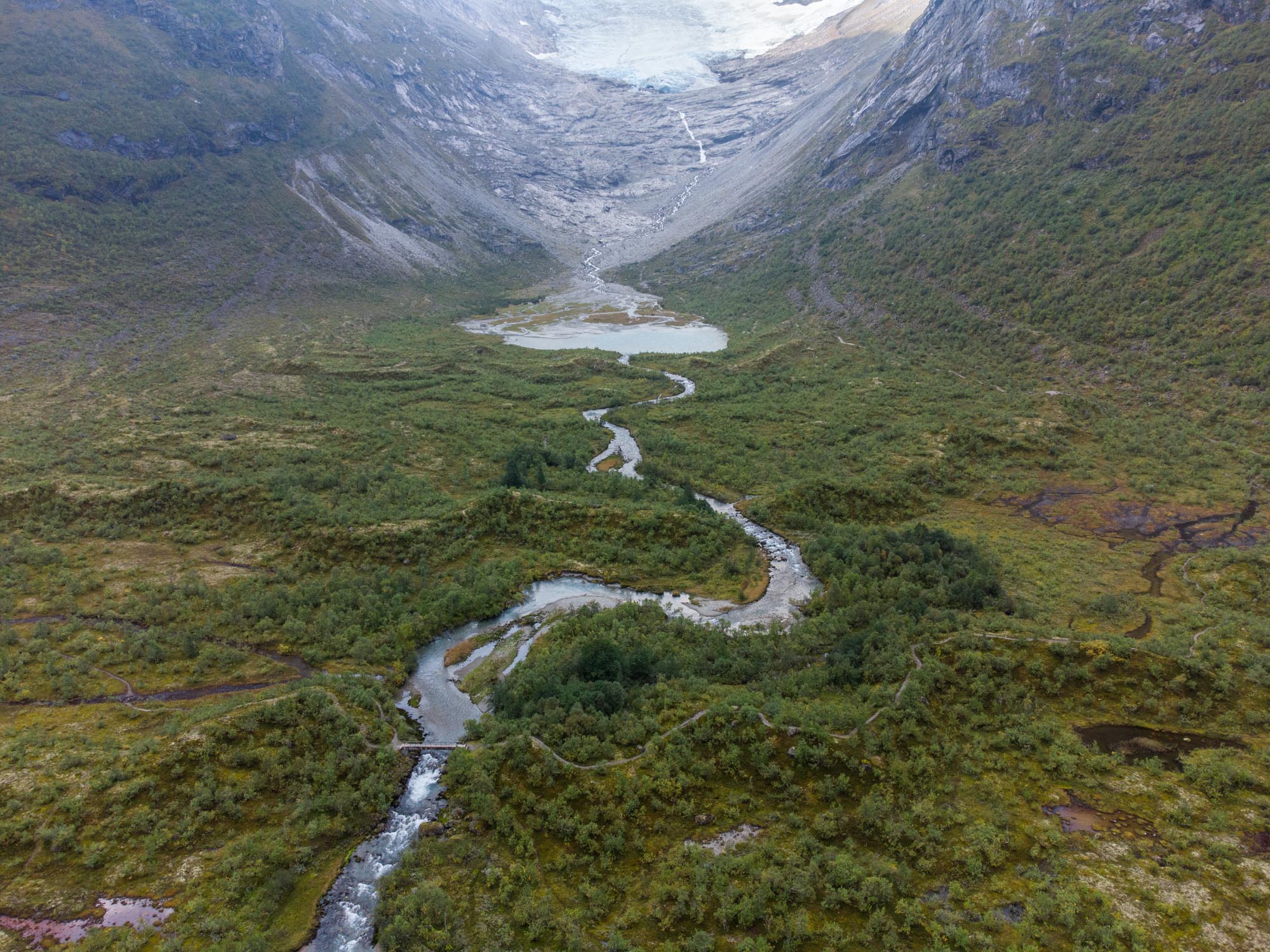
Nowadays, the glacier is confined to a relatively narrow and steep valley. But up to the first decades of the 20th century Bødalsbreen descended all the way down to the flat valley floor of Bødalen at 600 m a.s.l. Here, the valley widens and so did the glacier. The ice therefore splayed out and developed radial crevasses. The snout margin was crenulated as a result, with teeth and notches up to 100 m apart.
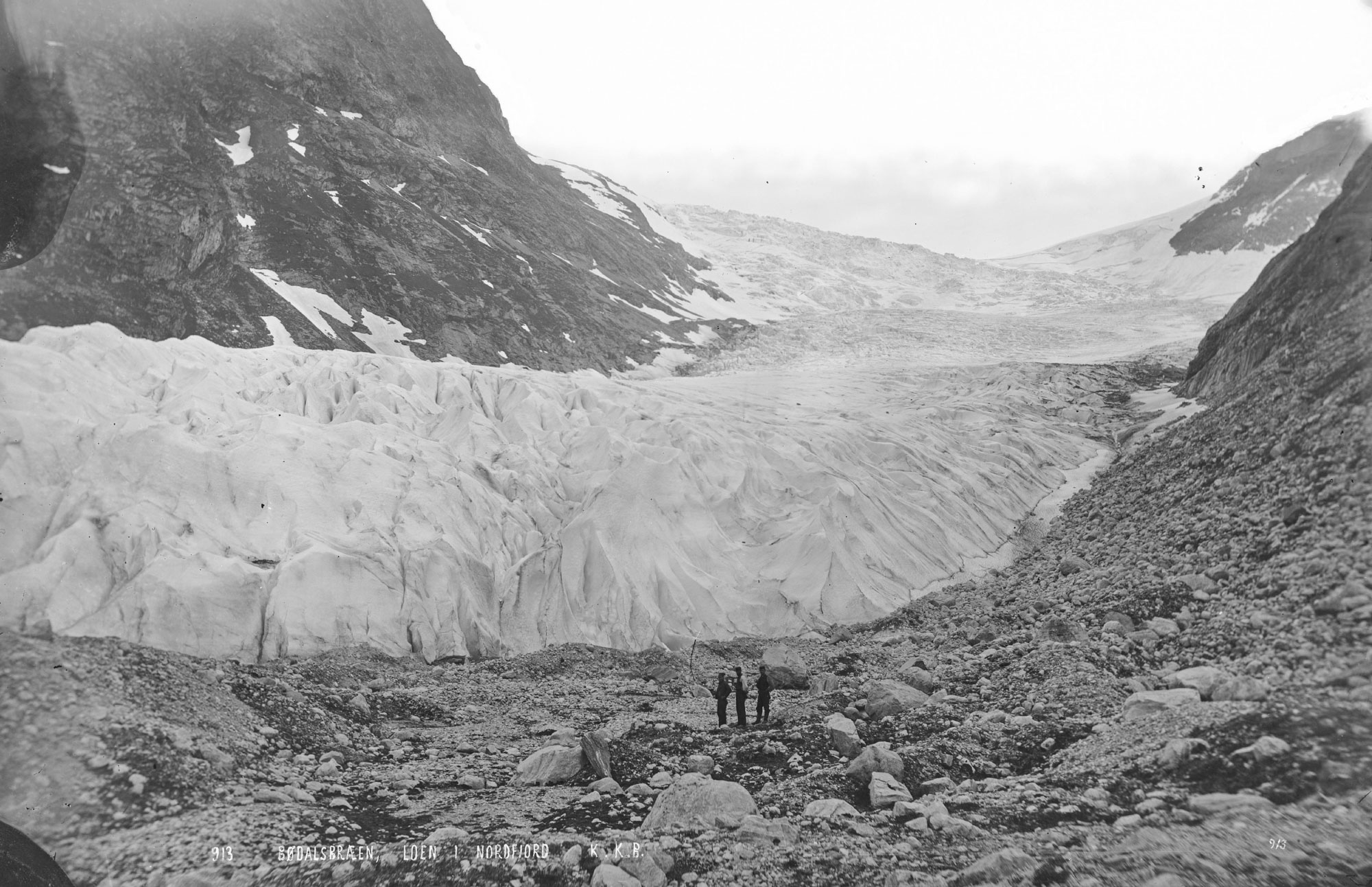

Bødalsbreen in 1872 and 2024. Source 1872: Knud Knudsen, Bergen University Library photo 1318-0913.

As the sawtooth-shaped glacier pushed forward, it bulldozered sediment into a moraine that mirrored its contours. This happened seven times between 1767 and 1930 (Bickerton & Matthwes, 1993). On the plain in front of Bødalsbreen there are therefore seven sawtooth moraines, of which the older ones (dating from ca. 1767 and 1813) have the best developed teeth and notches.
Those seven sawtooth moraines are not uniform though. In the middle of the valley they consist of finer sediments, whereas the lateral moraines are made up of large boulders. Further, clasts in the outer (older) moraines have matured more than in the inner (younger) ones. This means that the sands and gravels in the outer moraines are recycled: they were transported, weathered, eroded and rounded repeatedly. The inner moraines, on the other hand, consist of material that was only recently plucked (eroded) by the glacier (Burki et al., 2009).

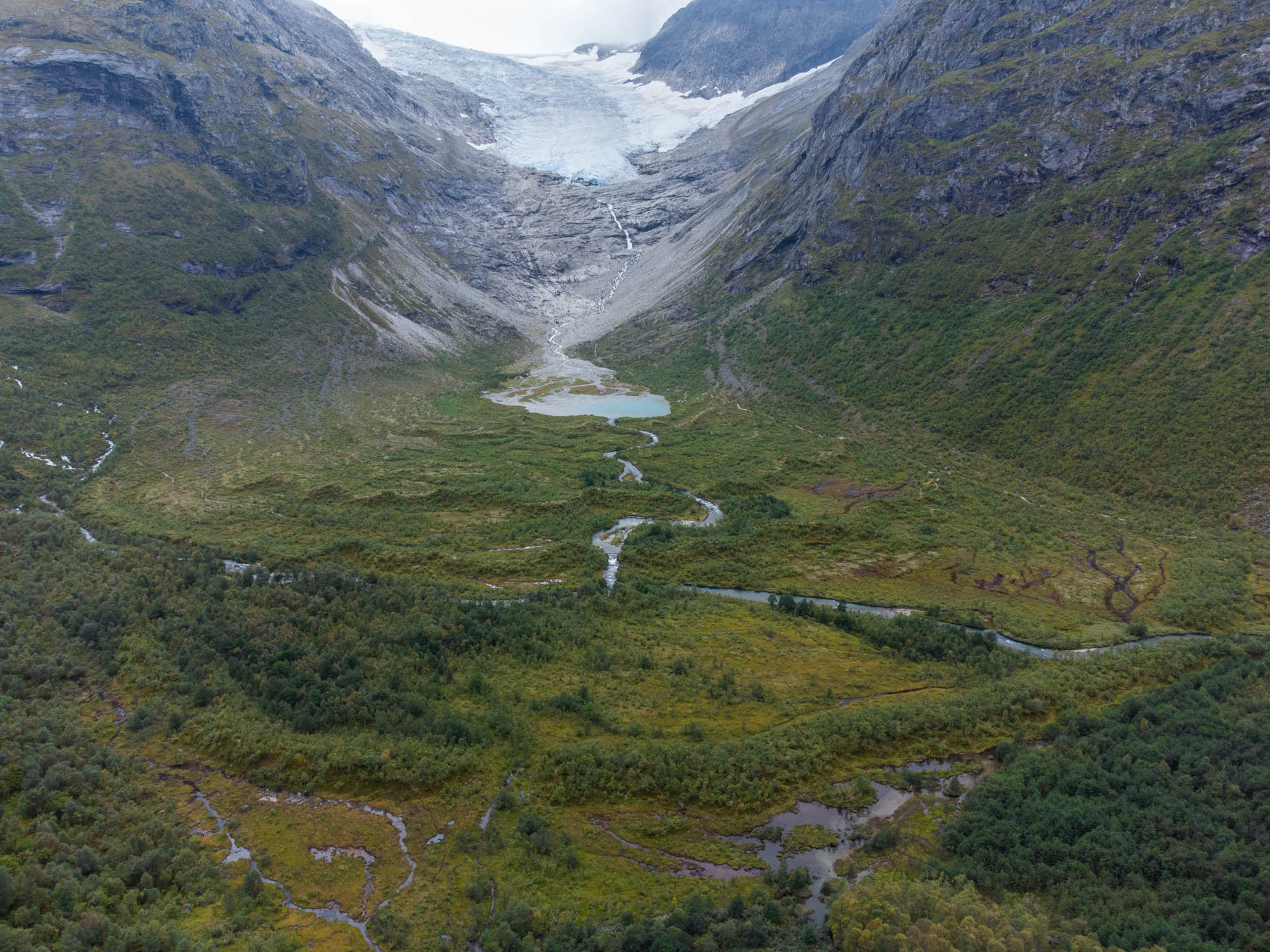
In front of the sawtooth moraine of 1767 is one more moraine. It dates from the year 1755, when Bødalsbreen attained its maximum extent. Remarkably, this ridge is smooth and regular instead of sawtooth-shaped. This striking difference is caused by the fact that the valley narrows again down-glacier. This increases the transverse stress such that splaying crevasses tend to close, making the glacier margin smooth again. So is the moraine it bulldozed (Burki et al., 2008).

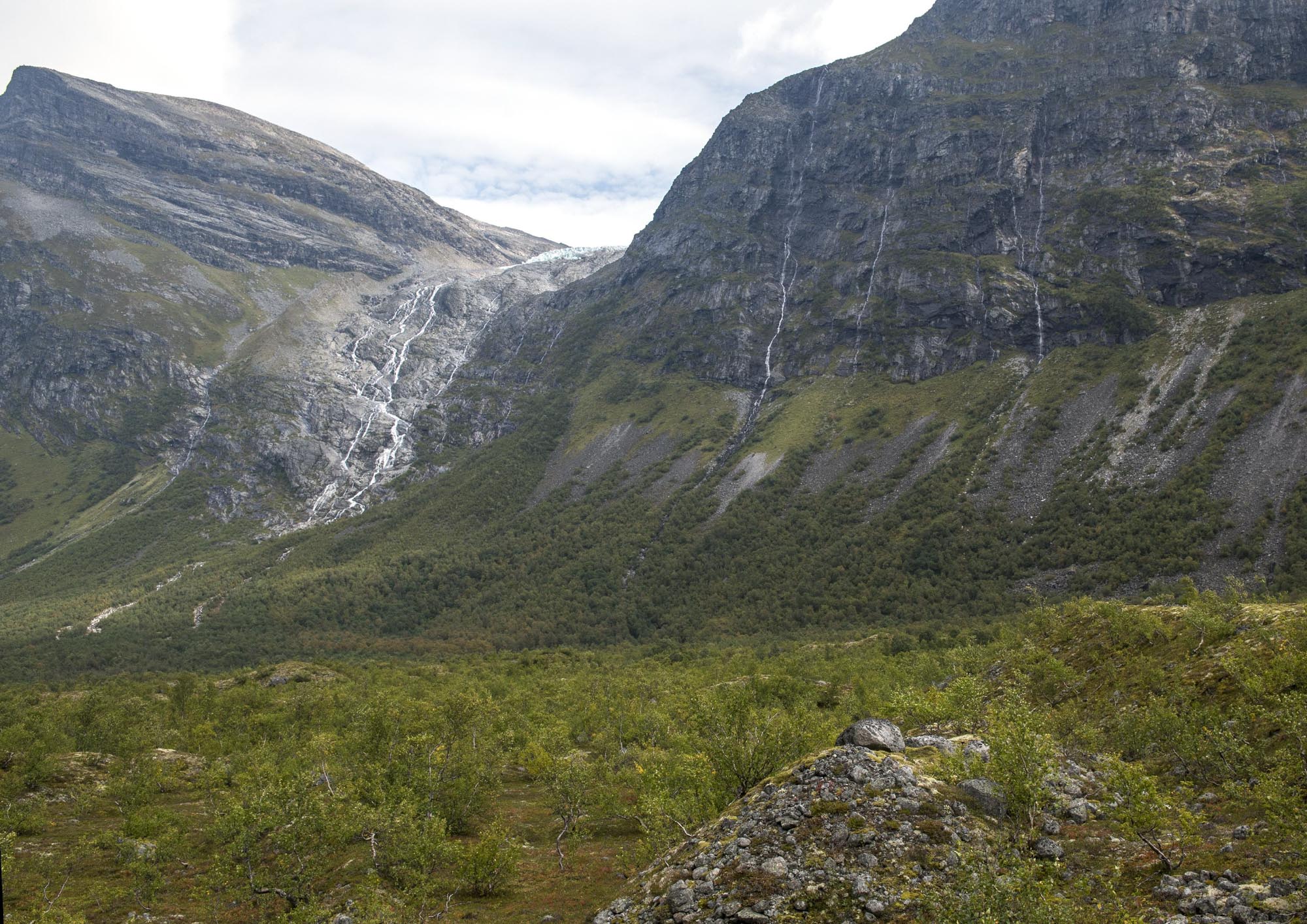
Recently formed moraines in 1872 (left) and in 2024. Note the retreat of Skålebreen in the back. Source 1872: Knud Knudsen, Bergen University Library photo 1318-0916.
The topography of Bødalen thus led to a rare sequence of moraines. They were formed a long time ago and are therefore vegetated. The space between them has partly filled with fluvial sediments, so did lake Sætrevatnet. A beautiful delta progrades into the lake.
Although no new sawtooth moraines were formed in the valley since about 1930, a small glacier readvance in the 1990’s did lead to a simple arcuate moraine a little higher up. Bødalsbreen grew by over 200 m between 1983 and 2000 (NVE). The growing glacier had steep sides and was very close to the path.



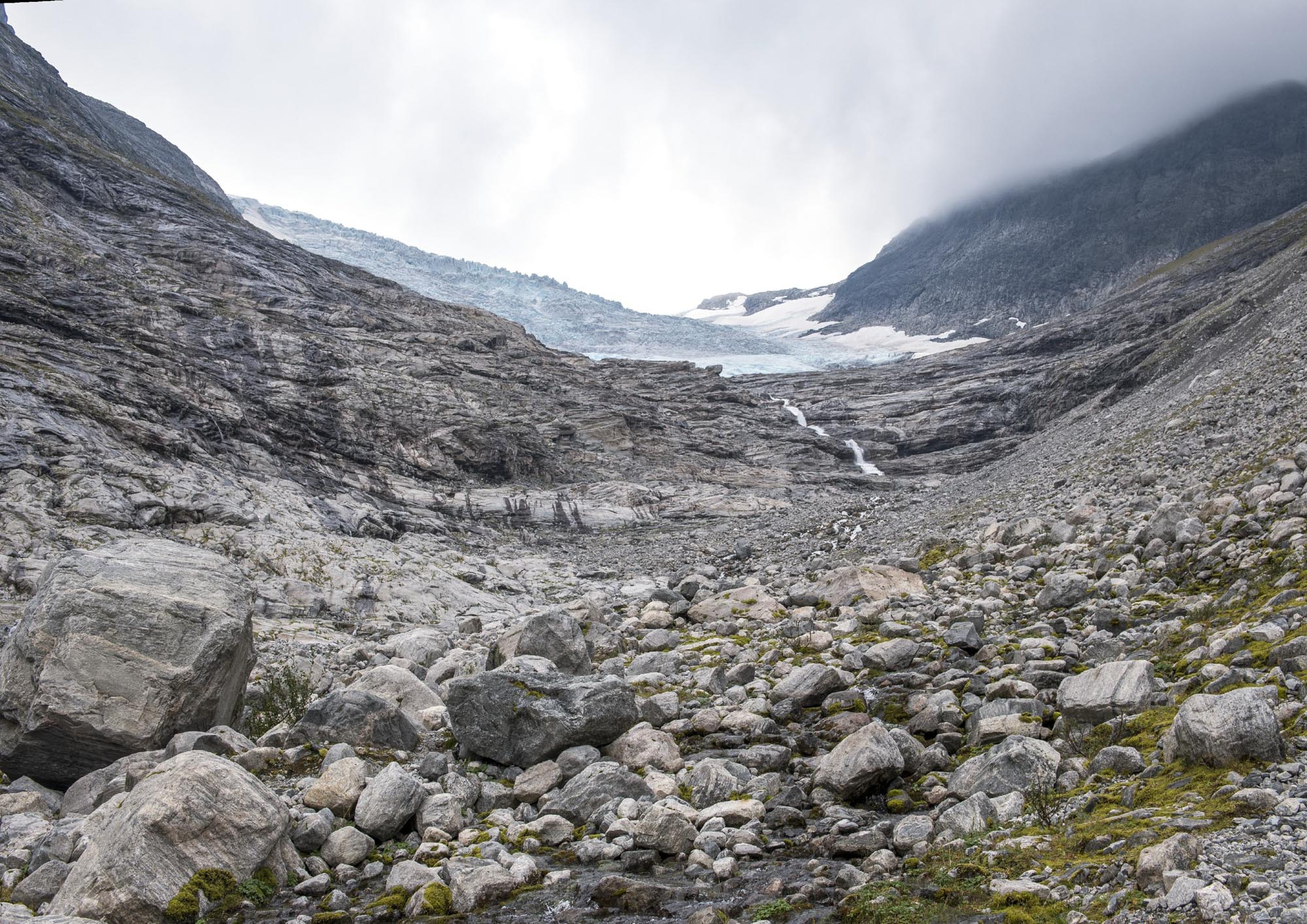
Bødalsbreen in 2006 (Buro Scandinavia via Flickr) and 2024.
The short-lived advance was followed by rapid melt. The last glacier walks were organized on Bødalsbreen in 2012, after which the snout fell apart. Now, the glacier is impossible to reach, because it lies above a steep rock face. Luckily, the spectacular moraines are more durable.
Search within glacierchange: